Meet the Editorial board
Abstract
Soft Matter profiles members of the Editorial Board: Ulli Steiner, Darrin Pochan, Colin Bain, Paula Hammond, Geoff Maitland, Tom McLeish, Helmuth Möhwald, Sam Stupp and Kaoru Tsujii.
Ullrich Steiner studies micro- and nanoscale pattern formation processes that take place at surfaces and in thin films. The controlled creation of structures on small length scales is essential for many applications. Examples include the manufacture of semiconductor chips (current pattern size ∼100 nm), displays, and bio-chips, but also surfaces with special properties such as anti-reflective coatings, self-cleaning surfaces, etc. In addition to the applied aspects listed above, the study of pattern formation processes is very sensitive to forces that act at surfaces and interfaces. From a fundamental point of view, he studies phenomena that take place at liquid surfaces or in thin films to gain information about interactions that are relevant on molecular and mesoscopic length scales.
He recently moved from the University of Groningen to take up the John Humphrey Plummer Professorship of Physics of Materials at the University of Cambridge.
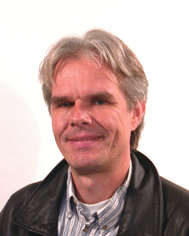 | ||
| Plate1 Chair: Ulli Steiner (Cavendish Laboratory, Cambridge, UK) | ||
Darrin Pochan's research interests centre around the specific rules and general paradigms underlying molecular design and self-assembly of unique polymeric, peptidic, and organic–inorganic hybrid materials. Advanced hydrogel materials are being constructed via the design and self-assembly of peptidic molecules. Secondary structure phase transitions and intramolecular folding events sensitive to desired stimuli (e.g. temperature, pH, ionic strength, and mechanical shear) are critical for the production of networks whose structure, and consequent function, is sensitive to desired environmental cues. Non-interconnected structures, such as vesicles and unique toroidal and disk-like micelles, are also produced via self-assembly from peptidic or charged synthetic block copolymer molecules. These potential drug delivery vehicles are also sensitive to environmental stimuli via secondary structure transitions that provide an active gating mechanism of the closed membranes. The concept of biomaterials is also being extended to composite materials by using biomolecules as the matrices of nanocomposites. By understanding how the primary and secondary structures of biopolymers interact with different reinforcement phases, one can successfully design nanocomposites with a completely dispersed reinforcement phase that also contains desired biological properties. Therefore, the opportunity to produce materials with a combination of strong, tough mechanical properties and biocompatibility and/or biodegradability exists.
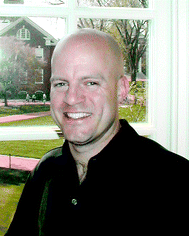 | ||
| Plate2 Associate Editor: Darrin Pochan (University of Delaware, USA) | ||
Colin Bain's expertise lies in the areas of self-assembled monolayers, wetting and other dynamic interfacial phenomena, surface phase transitions, surfactant adsorption at a variety of interfaces, and the development of new analytical techniques for interrogating interfaces at a molecular level. His recent work extends into supported lipid bilayers and optical trapping of particles at interfaces. He is currently in the Department of Chemistry at Oxford but will be taking up a Chair in Physical Chemistry at the University of Durham later this year.
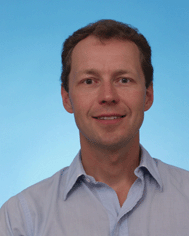 | ||
| Plate3 Colin Bain (Oxford, UK) | ||
Paula T. Hammond is the Mark Hyman, Jr. Career Development Chair Associate Professor in the Department of Chemical Engineering at the Massachusetts Institute of Technology. In 2000, she was awarded the Junior Bose Faculty Award at MIT. She has also received the NSF Career Award, the EPA Early Career Award, the DuPont Young Faculty Award, and the 3M Innovation Fund Award. She was recently a Radcliffe Fellow at Harvard University.
Professor Hammond's research and educational program emphasizes the use of molecular aspects in the study and development of new materials and processes. Her general areas of interest include electrical and optical properties of polymers, biomaterials, and nano- to microscale fabrication using directed and self-assembly of polymers. Recent applications investigated in her group include ultrathin film systems for microbatteries and fuel cells, drug delivery and cellular templates for biomaterials. Professor Hammond was one of a core group of founding faculty members involved in the planning and development of the Institute for Soldier Nanotechnologies (ISN) at MIT. This major multidisciplinary research center, which was funded for $50 million by the US Army, is directed toward new technologies involving nanostructured materials for the protection of the soldier.
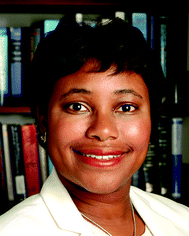 | ||
| Plate4 Paula Hammond (MIT, USA) | ||
Geoff Maitland is a physical chemist whose research interests are in the links between interactions at the molecular/colloidal level and the bulk properties of materials. After an academic career in Oxford, Bristol and Imperial College, his interest in soft matter really started on joining the oil and gas industry with Schlumberger in 1986, where he has worked on the rheology and microstructure of complex oilfield materials. He has held several Research Director roles in the area of fluid physics and chemistry and is currently Scientific Advisor in the Cambridge Research Centre.
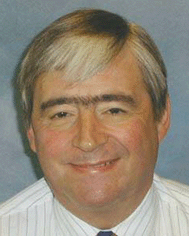 | ||
| Plate5 Geoff Maitland (Schlumberger, UK) | ||
Tom McLeish, Professor of Polymer Physics at the University of Leeds, is currently a Senior Research Fellow of the EPSRC (UK), a consultant for Dow, Unilever and BP Chemicals, and is the Director of the UK Polymer IRC, a multidisciplinary consortium of over 100 polymer scientists from the Universities of Leeds, Bradford, Durham and Sheffield, that is strongly integrated with industry. His research interests include: molecular rheology and processing of entangled polymeric fluids (especially the role of molecular topology); macromolecular biophysics including protein folding and interactions and biological self-assembly; and issues of theology, ethics and science.
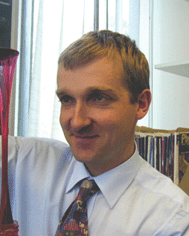 | ||
| Plate6 Tom McLeish (Leeds, UK) | ||
Helmuth Möhwald did his PhD at the Max-Planck-Institut of Biophysical Chemistry in Göttingen, Germany, and habilitated in physics at the University of Ulm. From 1978 to 1981 he worked for Dornier Systems, Friedrichshafen, before returning to academia and taking up a Chair of Physical Chemistry at the University of Mainz in 1987. He has been director and a scientific member of the “Interfaces” department at the Max-Planck-Institut of Colloids and Interfaces in Golm/Potsdam since October 1993. His research interests include amphiphiles, monolayers, polyelectrolyte films and capsules, fluid interfaces, and nanoparticles. He holds Guest Professorships at Zheijang University, Hangzhou, and Fudan University, Shanghai, and an Honorary Professorship at the University of Potsdam.
Samuel Stupp earned his B.S. in Chemistry from the University of California at Los Angeles and his Ph.D. in materials science and engineering from Northwestern University in 1977. He was a member of the faculty at Northwestern until 1980 and then spent 18 years at the University of Illinois at Urbana-Champaign where he was appointed in 1996 Swanlund Professor of Materials Science and Engineering, Chemistry, and Bioengineering. In 1999, he returned to Northwestern as a Board of Trustees Professor of Materials Science, Chemistry, and Medicine, and later was appointed Director of Northwestern's Institute for BioNanotechnology in Medicine. Professor Stupp is a member of the American Academy of Arts and Sciences, and fellow of the American Physical Society, American Association for the Advancement of Science, World Technology Network, and World Biomaterials Congress. His awards include the Department of Energy Prize for Outstanding Achievement in Materials Chemistry, a Humboldt Senior Award, the Materials Research Society's Medal Award, and the American Chemical Society Award in Polymer Chemistry for his work on supramolecular self-assembly. He was recently Paris Sciences Medal lecturer at Ecole Supérieure de Physique et de Chimie Industrielles in Paris, Merck-Karl Visiting Professor of Organic Chemistry at MIT, and visiting professor at the Institut de Science et d'Ingenierie Supramoleculaires in Strasbourg. His areas of research include self-assembly, electronic and photonic properties of organic nanostructures, biomolecular mineralization, templating chemistry of inorganic nanostructures, and biomaterials for regenerative medicine.
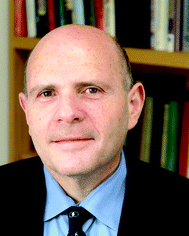 | ||
| Plate7 Sam Stupp (Northwestern University, USA) | ||
Kaoru Tsujii is currently at the Nanotechnology Research Center, Hokkaido University, Japan. His current research themes include: fractal nanotechnology to create functional materials such as super water-repellent surfaces; hydrogels containing molecular assemblies like bilayers and micelles; and colloid science in supercritical water.
Until recently Professor Tsujii was Director of Tokyo Research Center and Kao Institute for Fundamental Research in Kao Corporation (a leading manufacturer of consumer products in Japan). He is now the Program Director of the DEEPSTAR Group in Japan's Marine Science and Technology Center, and has been a Professor of Hokkaido University since 2003.
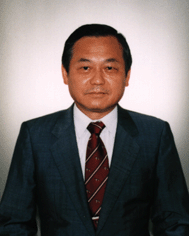 | ||
| Plate8 Kaoru Tsujii (Hokkaido University, Japan) | ||
David Bensimon of ENS Paris has recently joined the Editorial Board. Look out for his profile in a forthcoming issue of Soft Matter!
| This journal is © The Royal Society of Chemistry 2005 |
